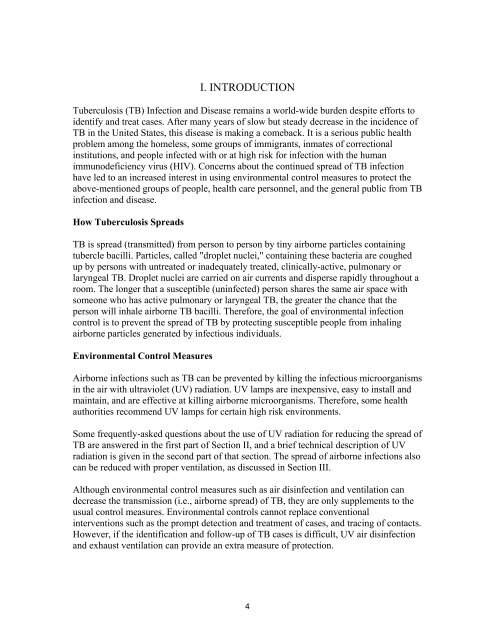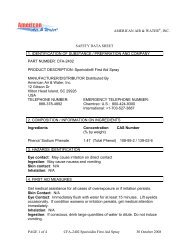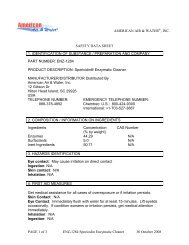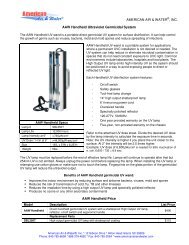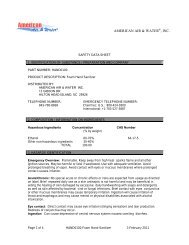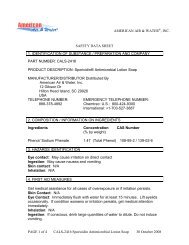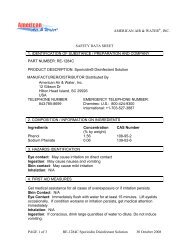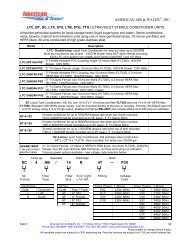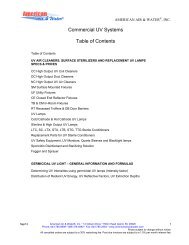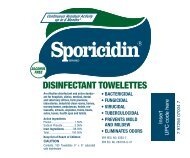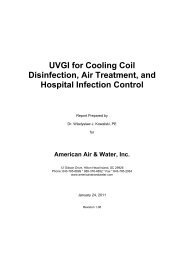Using Ultraviolet Radiation and Ventilation to Control Tuberculosis
Using Ultraviolet Radiation and Ventilation to Control Tuberculosis
Using Ultraviolet Radiation and Ventilation to Control Tuberculosis
Create successful ePaper yourself
Turn your PDF publications into a flip-book with our unique Google optimized e-Paper software.
I. INTRODUCTION<br />
<strong>Tuberculosis</strong> (TB) Infection <strong>and</strong> Disease remains a world-wide burden despite efforts <strong>to</strong><br />
identify <strong>and</strong> treat cases. After many years of slow but steady decrease in the incidence of<br />
TB in the United States, this disease is making a comeback. It is a serious public health<br />
problem among the homeless, some groups of immigrants, inmates of correctional<br />
institutions, <strong>and</strong> people infected with or at high risk for infection with the human<br />
immunodeficiency virus (HIV). Concerns about the continued spread of TB infection<br />
have led <strong>to</strong> an increased interest in using environmental control measures <strong>to</strong> protect the<br />
above-mentioned groups of people, health care personnel, <strong>and</strong> the general public from TB<br />
infection <strong>and</strong> disease.<br />
How <strong>Tuberculosis</strong> Spreads<br />
TB is spread (transmitted) from person <strong>to</strong> person by tiny airborne particles containing<br />
tubercle bacilli. Particles, called "droplet nuclei," containing these bacteria are coughed<br />
up by persons with untreated or inadequately treated, clinically-active, pulmonary or<br />
laryngeal TB. Droplet nuclei are carried on air currents <strong>and</strong> disperse rapidly throughout a<br />
room. The longer that a susceptible (uninfected) person shares the same air space with<br />
someone who has active pulmonary or laryngeal TB, the greater the chance that the<br />
person will inhale airborne TB bacilli. Therefore, the goal of environmental infection<br />
control is <strong>to</strong> prevent the spread of TB by protecting susceptible people from inhaling<br />
airborne particles generated by infectious individuals.<br />
Environmental <strong>Control</strong> Measures<br />
Airborne infections such as TB can be prevented by killing the infectious microorganisms<br />
in the air with ultraviolet (UV) radiation. UV lamps are inexpensive, easy <strong>to</strong> install <strong>and</strong><br />
maintain, <strong>and</strong> are effective at killing airborne microorganisms. Therefore, some health<br />
authorities recommend UV lamps for certain high risk environments.<br />
Some frequently-asked questions about the use of UV radiation for reducing the spread of<br />
TB are answered in the first part of Section II, <strong>and</strong> a brief technical description of UV<br />
radiation is given in the second part of that section. The spread of airborne infections also<br />
can be reduced with proper ventilation, as discussed in Section III.<br />
Although environmental control measures such as air disinfection <strong>and</strong> ventilation can<br />
decrease the transmission (i.e., airborne spread) of TB, they are only supplements <strong>to</strong> the<br />
usual control measures. Environmental controls cannot replace conventional<br />
interventions such as the prompt detection <strong>and</strong> treatment of cases, <strong>and</strong> tracing of contacts.<br />
However, if the identification <strong>and</strong> follow-up of TB cases is difficult, UV air disinfection<br />
<strong>and</strong> exhaust ventilation can provide an extra measure of protection.<br />
4


